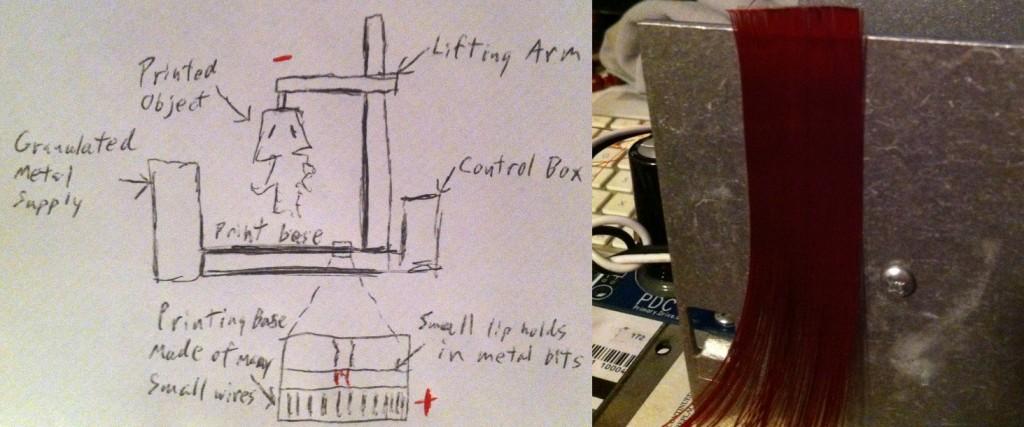It’s incredible how many different methods of 3D printing have emerged since Chuck Hull’s invention of stereolithography (SLA) back in 1984. In additional to SLA, there is now direct metal laser sintering, powder bed laser sintering, electron beam melting, fused deposition modeling, and selective laser sintering, among other 3D printing technologies. I’m sure over the next several years, researchers and DIYers will discover other, perhaps more efficient, methods of additive manufacturing as well.
One member of Hackaday.io, who goes by the handle of ‘on37w0’ (and introduces himself as George in his project’s video), thinks he may have discovered a new technique to 3D print metal objects at speeds which currently seem like a pipe dream. The self-proclaimed ‘Fixer of Things’ has posted a project on the site, which is dedicated to serving up fresh ‘hacks’ every day from around the internet.
Although the Hackaday user is limited on funding and time, he is slowly working on this idea, which he has posted in full at Hackaday.io. The method described by ‘0n37w0’ is called arc printing. It is based on the same process used in the arc welding field, and according to the project’s designer, “the Arc printer is a rapid printing 3D printer with minimal moving parts designed to print objects in minutes not hours.”
For those of you unfamiliar with how arc welding works, it is a fusion welding process which uses a welding power supply to create an electric arc between an electrode and a base material which is fuses the metals together. The electric arc is able to produce intense heat of close to 6,500 degrees F, instantly melting and fusing the electrode and base metals.
The Arc printer would work in a similar fashion, by “completing an electrical current on an area of granulated metal, thus heating the metal enough to form a bond to the structure being printed.”
Sort of like many SLA printers which use UV light to cure a resin, this machine also works from the bottom up. The head of the printer would be at the bottom of the print platform, which consists of many small wires placed in a 256 x 256 array. The arrays would be individual modules which correlate to the X and Y coordinates fed to the printer via a slicing software. The printer could easily be scaled up by simply adding additional wire arrays.
The Arc printer would work by using a thin layer of metal powder, which is printed layer by layer. An arm will come down on top of the metal powder on the build platform. At this point the arm is in contact with the metal powder, and an electrical current is sent to the arm. Working from the center out, an entire layer can be welded in a matter of seconds. Once a layer is done, the machine will vibrate slightly moving the next layer of metal powder onto the build platform, the arm will lift, and the process repeats.
The Hackaday user believes that such a machine would be capable of printing at ten times the speed of the fastest metal printers on the market today. Whether this type of arc printer will work like the designer believes it should is yet to be seen. Below you will find a quick video describing an arc welding process, so that you can get a better feel for what is involved in this concept. The project does seem to be backburnered for now, but we’ll keep looking out for more updates!
Let’s hear your thoughts on whether or not such a printer would work, and if it would really be an entire order of magnitude faster than whats on the market today. Discuss in the Arc 3D Printer forum thread on 3DPB.com.
https://youtu.be/GfZ3stjMIkk?list=UUhnQ8WTKSiwjqov9sBKKjaQ
